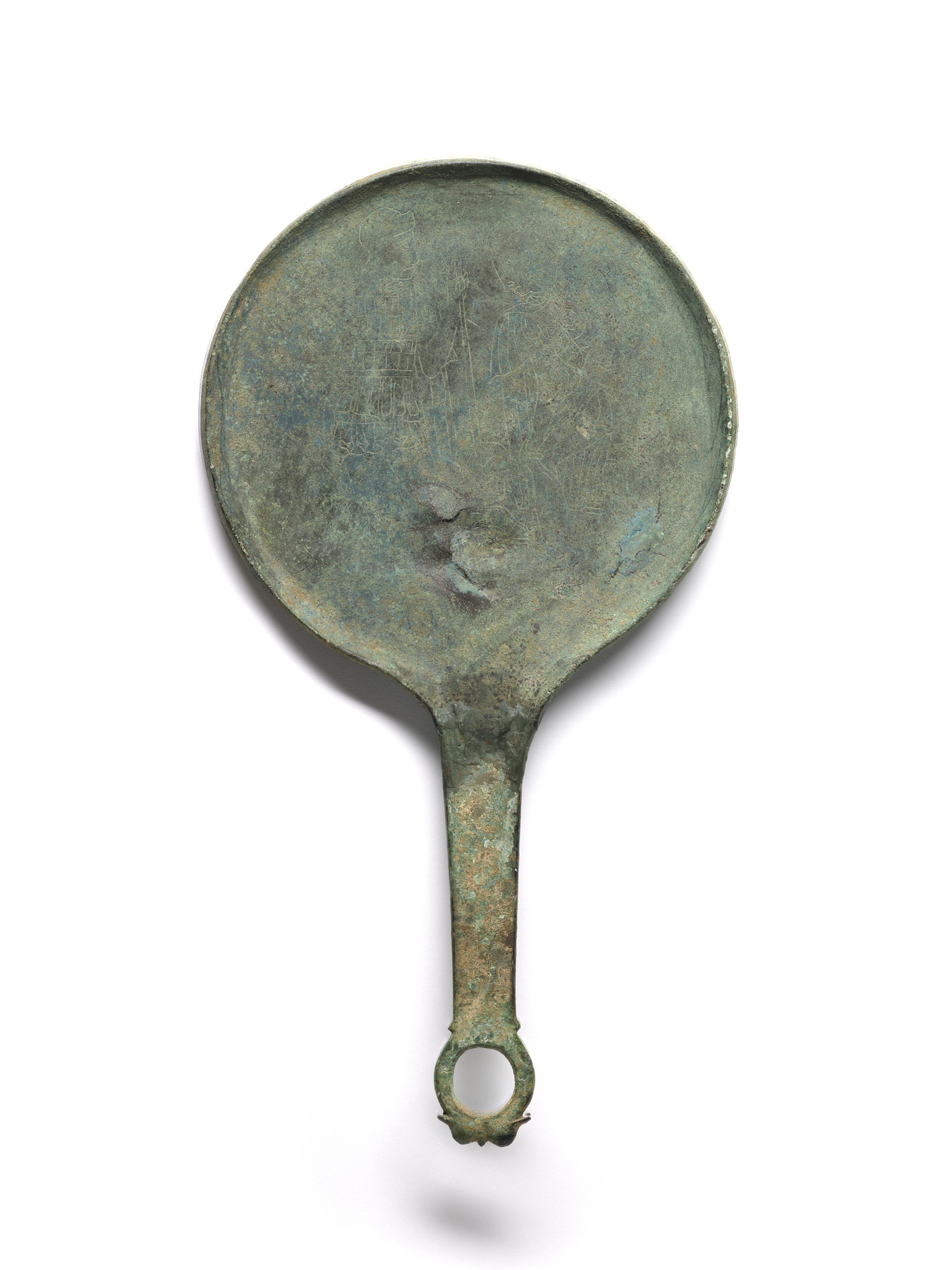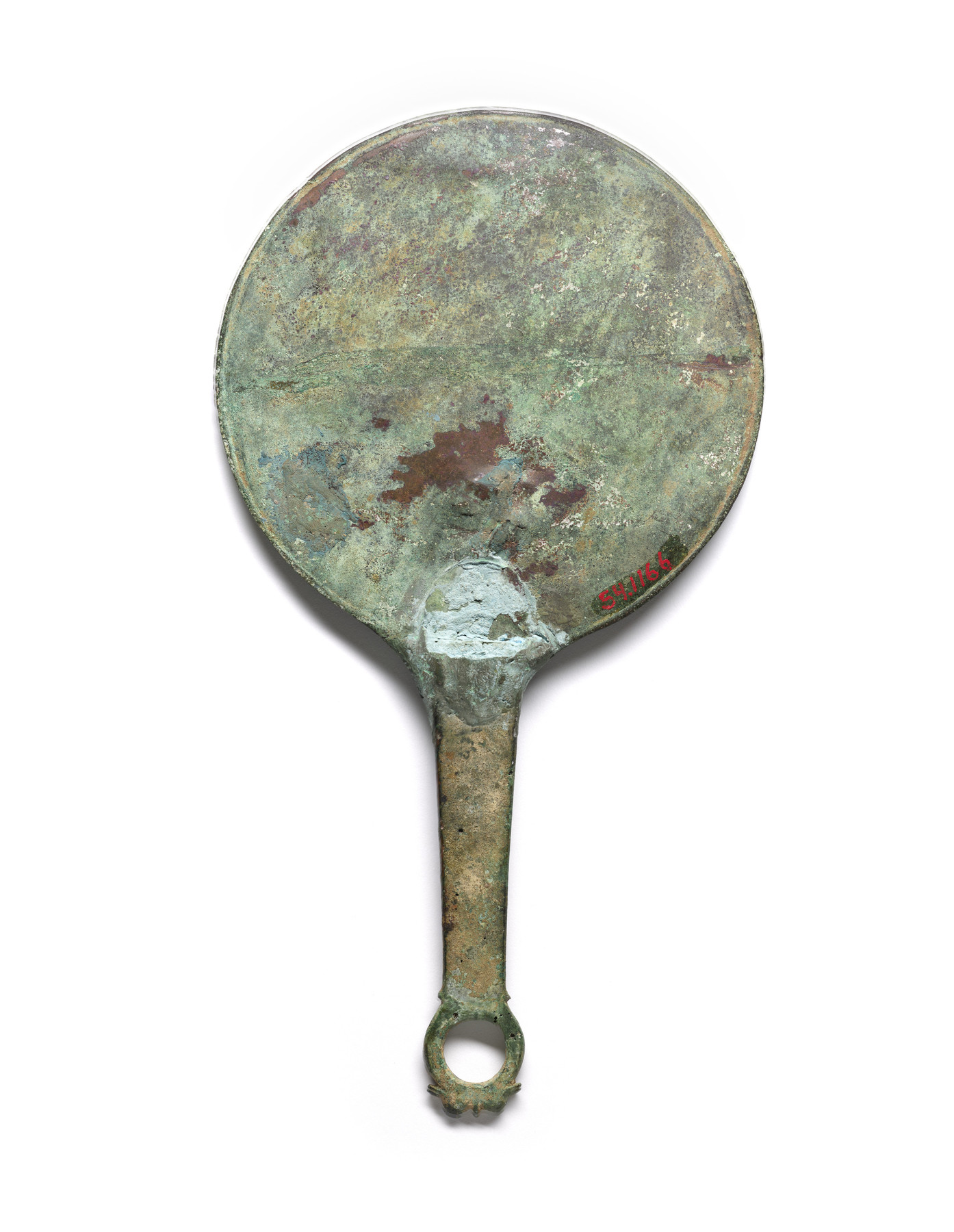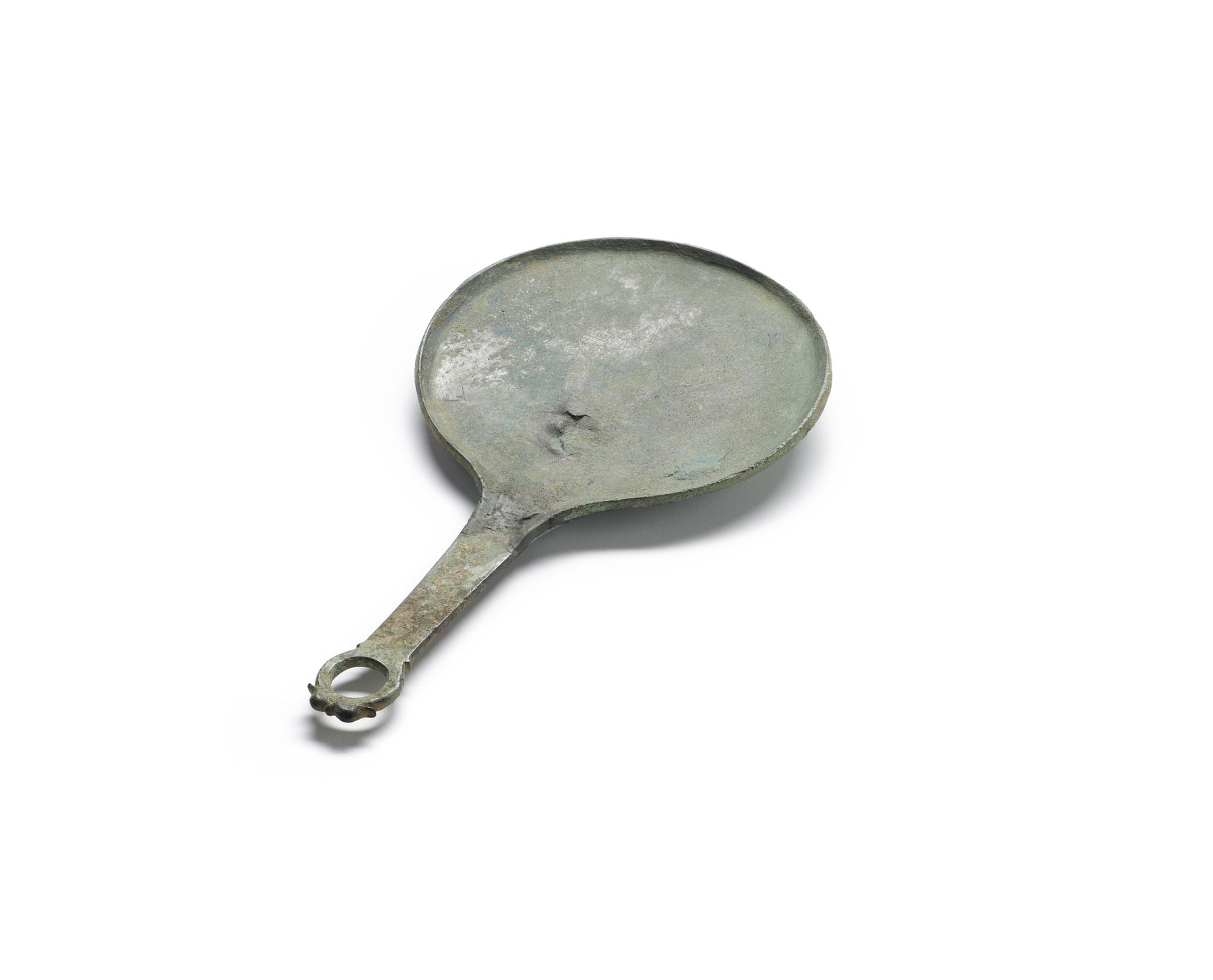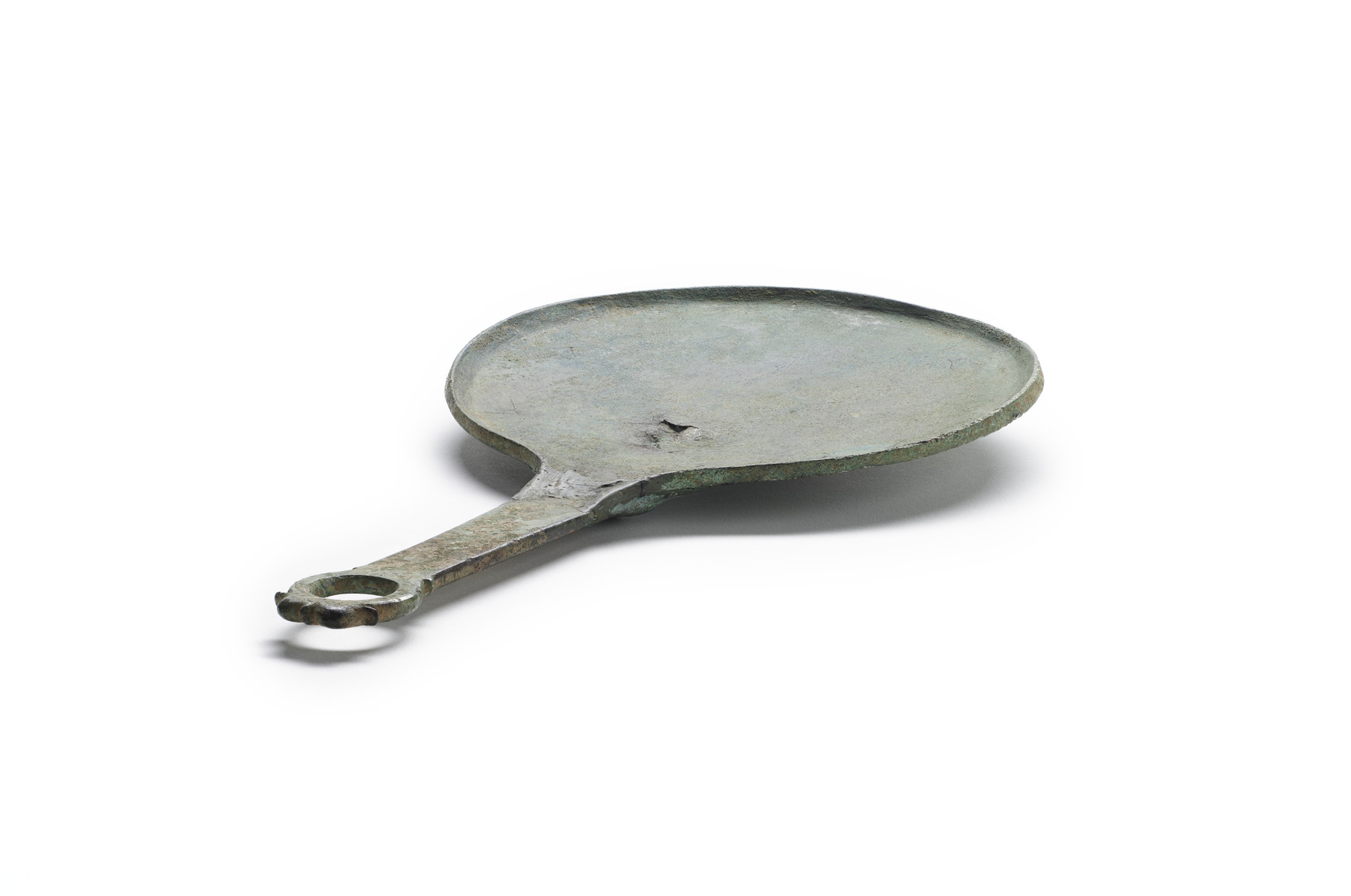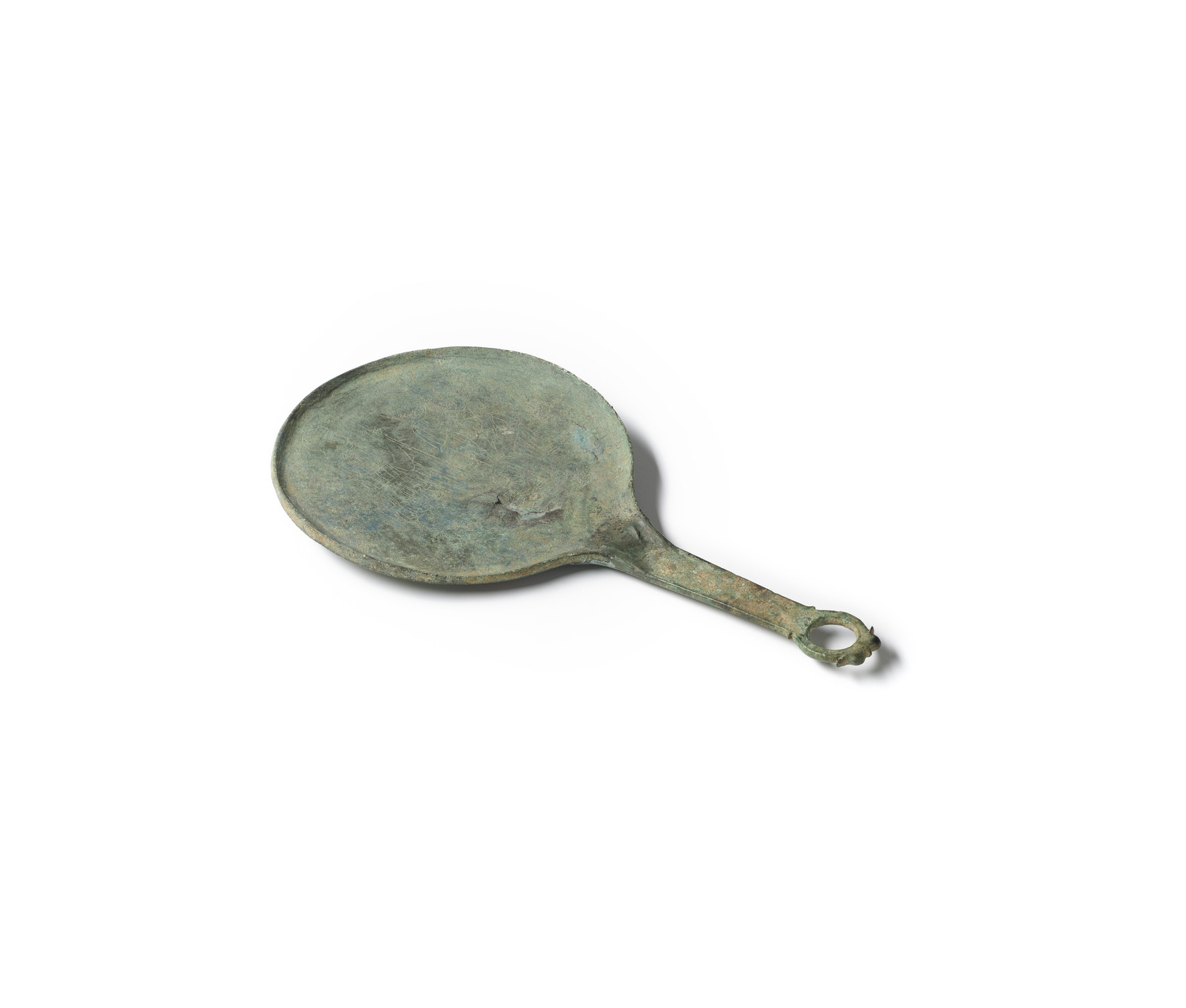Hand Mirror with Engraved Scene of Two Warriors
(Roman Empire )
The engraved scene on this mirror shows two men wearing different styles of armor. The man on the left wears a laminated corselet, while the man on the right wears a muscled cuirass. The differences in their armor may be meant to indicate the men are from opposite sides of a conflict, such as a Greek and a Trojan during the Trojan War. While many Etruscan mirrors have incised labels to identify the figures, this one does not. Similar scenes, however, include Hector, Achilles, and Ajax. The handle is not original to the mirror and was attached at some time after the mirror was excavated. The handle may also be Etruscan, probably from a pan. The damage on the mirror disc may indicate that it was ritually killed prior to deposition in a grave.
Provenance
Provenance (from the French provenir, 'to come from/forth') is the chronology of the ownership, custody, or location of a historical object. Learn more about provenance at the Walters.
Don Marcello Massarenti Collection, Rome [date and mode of acquisition unknown]; Henry Walters, Baltimore, 1902, by purchase; Walters Art Museum, 1931, by bequest.
Exhibitions
| 2021-2022 | Betty Cooke: The Circle and the Line. The Walters Art Museum, Baltimore. |
Conservation
| Date | Description | Narrative |
|---|---|---|
| 8/27/1976 | Examination | technical study |
| 3/17/1980 | Examination | examined for technical study; x-ray |
| 7/21/1992 | Treatment | other |
Geographies
Italy, Etruria (Place of Origin)
Measurements
H: 11 1/8 x Diam: 6 in. (28.3 x 15.3 cm)
Credit Line
Acquired by Henry Walters with the Massarenti Collection, 1902
Location in Museum
Not on view
Accession Number
In libraries, galleries, museums, and archives, an accession number is a unique identifier assigned to each object in the collection.
In libraries, galleries, museums, and archives, an accession number is a unique identifier assigned to each object in the collection.
54.1166

